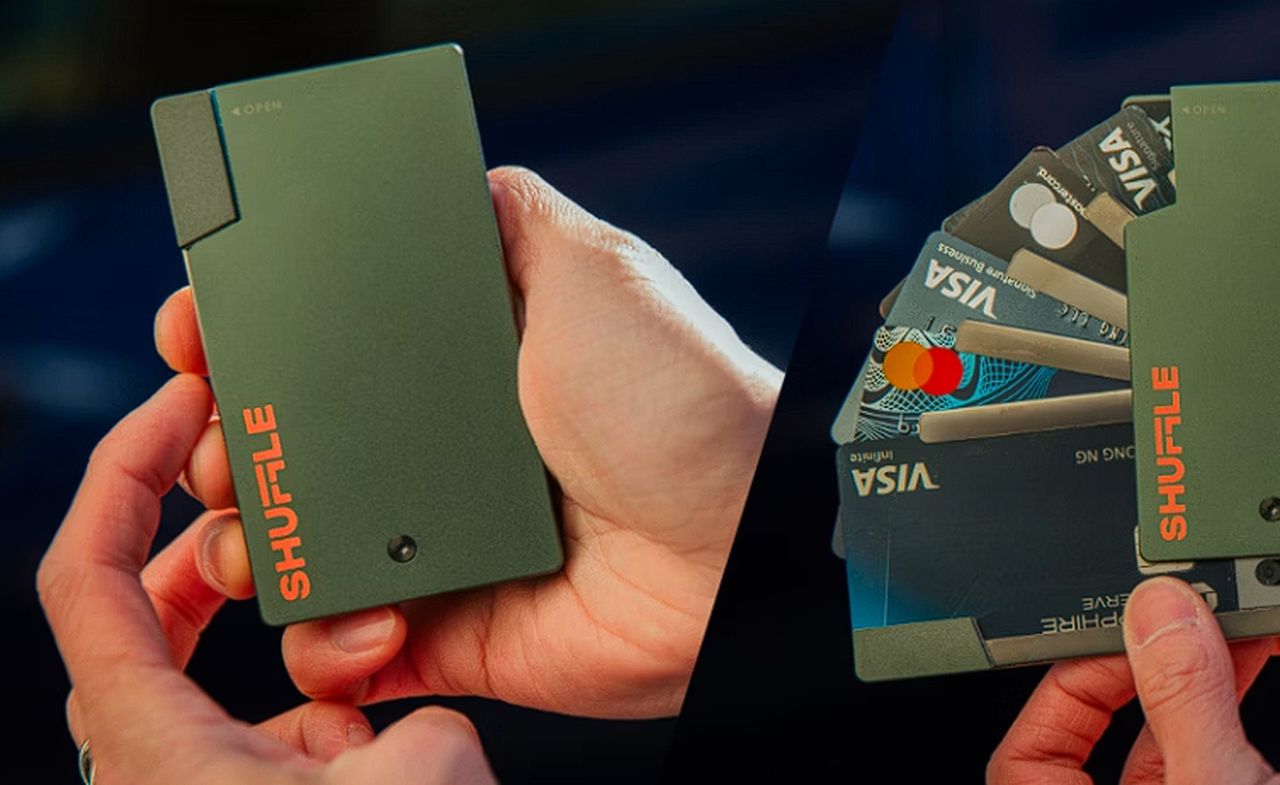
If you are searching for a quick way to access your credit cards you might be interested in the Shuffle Wallet. Specifically designed offer you swift access to your necessities, ensuring that your personal information is safeguarded at all times. The standout feature of the Shuffle Wallet is its unique deck-of-cards opening mechanism. This clever design allows you to spread out your cards with ease, so you can quickly find the one you need. It’s a simple solution to the common problem of d”igging through a pile of cards, which can be both time-consuming and irritating.
Early bird pledge levels are now available for the groundbreaking project from roughly $79 or £63 (depending on current exchange rates). In today’s digital era, protecting your sensitive information is more important than ever. The Shuffle is equipped with RFID blocking technology, which is essential for keeping your credit and debit card data safe from skimmers. This feature offers you the confidence to carry your wallet without worrying about digital theft.
Shuffle Wallet
For those who embrace technology, the wallet’s NFC capabilities are a standout addition. You can share your digital business card with just a tap, reducing paper use and ensuring that your contacts receive your details in a handy, digital form. This environmentally friendly option is ideal for the tech-savvy networker.

Ease of access is a crucial aspect of any wallet, and the Shuffle delivers with a quick-draw slot for your most frequently used card. This means no more fumbling for your primary credit card or ID; you can grab it instantly, making your day-to-day transactions smoother.
Assuming that the Shuffle Wallet funding campaign successfully raises its required pledge goal and production progresses smoothly, worldwide shipping is expected to take place sometime around April 2024. To learn more about the Shuffle Wallet NFC, RFID blocking wallet project analyze the promotional video below.
RFID Blocking credit card wallet
Despite the move towards a cashless society, many people still prefer to carry bills. The Shuffle Wallet’s compact money clip is designed to hold your cash in an orderly fashion without adding extra bulk, maintaining the wallet’s slim profile and ensuring your bills are always within reach.
Gadget lovers will be drawn to the optional feature that caters to Apple AirTag users. With this addition, losing your wallet can become a thing of the past. You can track your wallet’s location using your smartphone, which not only adds a layer of security but also a touch of convenience to your daily routine.

The wallet also comes with a non-RFID silicone pouch, perfect for items like subway passes or gym cards that you might need to scan without RFID interference. This thoughtful inclusion confirms that the Shuffle Wallet is designed to adapt to the varied needs of your lifestyle.
The Shuffle is more than a mere storage accessory for your cards and cash. It is an elegant tool that merges ease of use, security, and style into one. With its innovative card-fanning mechanism, RFID protection, NFC functionality, quick-access card slot, money clip, AirTag compatibility, and versatile non-RFID pouch, the Shuffle Wallet caters to the needs of the modern, security-aware individual. Embrace this sophisticated approach to wallet design with the Shuffle Wallet, where practicality is as important as aesthetics.
For a complete list of all available early bird specials, stretch goals, extra media and product specifications for the NFC, RFID blocking wallet, jump over to the official Shuffle Wallet crowd funding campaign page by checking out the link below.
Source : Kickstarter
Disclaimer: Participating in crowdfunding campaigns on sites like Kickstarter and Indiegogo involves inherent risks. While many projects successfully meet their goals, others may fail to deliver due to numerous challenges. Always conduct thorough research and exercise caution when pledging your hard-earned money as you might lose it all if the project fails.
Filed Under: Gadgets News, Top News
Latest timeswonderful Deals
Disclosure: Some of our articles include affiliate links. If you buy something through one of these links, timeswonderful may earn an affiliate commission. Learn about our Disclosure Policy.




